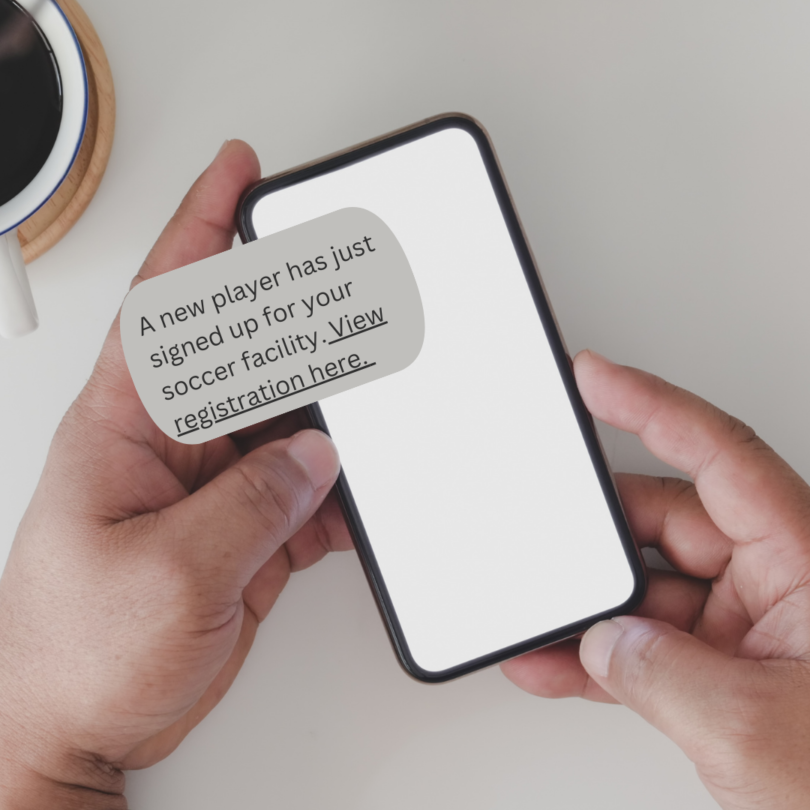The Significance of Text Abbreviations
The significance of text abbreviations cannot be overstated. These abbreviated forms serve as invaluable tools for succinctly expressing a wide range of thoughts, emotions, and actions in the digital realm. Whether it’s conveying laughter with the ubiquitous “LOL” or swiftly expressing agreement with the shorthand “IKR” (I Know, Right), these abbreviations play a pivotal role in streamlining communication, especially within the realm of texting where brevity is prized. Understanding the significance of these abbreviations is not merely advantageous but is indeed paramount for facilitating effective digital communication in our interconnected world.
Utilizing text abbreviations in communications with customers can enhance their experience by fostering a casual and approachable atmosphere. When businesses use these shorthand forms, it signals to customers that they can also use such informal language, which not only makes interactions more comfortable but also speeds up the communication process. This convenience can make texting a more efficient and appealing option for customers when they need to reach out to your business.
When using text acronyms in messages, it is important to consider the message tone carefully. Before sending a message, it is crucial to have a clear understanding of the intended content and tone of the message. Text acronyms such as LOL and TTYL are generally perceived as more informal in communication. Therefore, when using these acronyms, it is essential to keep in mind the informal nature they convey. This awareness of how text acronyms impact the tone of your message is crucial in effectively communicating with others through text.
To avoid overusing abbreviations in text messages, it is important to limit the number of acronyms used in each message. Excessive usage of abbreviations can make the message harder to read and understand. Rather than cramming multiple abbreviations into a single text, it’s better to use them sparingly to prevent confusion.
Tailored Solutions for Your Business
CloudContactAI understands that a one-size-fits-all approach doesn’t cut it, especially when catering to the diverse needs of our Enterprise+ clients. CloudContactAI sets a prime example of how consistent updates can align with the unique requirements of its Enterprise+ clients.
The Evolution of Text Message Abbreviations
The roots of text message abbreviations can be traced back to the nascent days of mobile phones, where character counts were severely limited. As texting began to gain traction as a popular means of communication, users encountered the challenge of expressing themselves concisely within the constraints of SMS. This necessity spurred the creative ingenuity of users who sought expedient ways to convey their messages swiftly and effectively. Thus, the landscape of digital communication witnessed the rapid proliferation of acronyms and abbreviations, which soon became deeply ingrained in the fabric of online discourse. What began as a pragmatic solution to the limitations of technology has evolved into a rich tapestry of linguistic innovation, reflecting the ever-changing dynamics of modern communication culture.
Most Popular Text Message Abbreviations/ Acronyms
LOL – Laughing Out Loud
BRB – Be Right Back
OMG – Oh My God
TBH – To Be Honest
TTYL – Talk To You Later
IMO – In My Opinion
IDK – I Don’t Know
SMH – Shaking My Head
FYI – For Your Information
ASAP – As Soon As Possible
JK – Just Kidding
LMAO – Laughing My Ass Off
TY – Thank You
ROFL – Rolling On the Floor Laughing
NVM – Never Mind
BTW – By The Way
THX – Thanks
YOLO – You Only Live Once
GTG – Got To Go
HBU – How About You?
IRL – In Real Life
IMHO – In My Humble Opinion
FYI – For Your Information
ILY – I Love You
ICYMI – In Case You Missed It
AFAIK – As Far As I Know
TMI – Too Much Information
TGIF – Thank God It’s Friday
GG – Good Game
OOTD – Outfit Of The Day
Social Media Text Abbreviations
FWIW – For What It’s Worth
TFW – That Feeling When
OFC – Of Course
WYD – What You Doing?
NGL – Not Gonna Lie
STFU – Shut The F*** Up
BRB – Be Right Back
IDC – I Don’t Care
LMK – Let Me Know
SMH – Shaking My Head
THX – Thanks
YOLO – You Only Live Once
GTG – Got To Go
HBU – How About You?
IRL – In Real Life
IMHO – In My Humble Opinion
FYI – For Your Information
ICYMI – In Case You Missed It
GG – Good Game
OOTD – Outfit Of The Day
Gen Z Slang
Generation Z, often hailed as the digital natives, has crafted a unique lexicon of slang that permeates their online interactions, particularly within the vibrant ecosystem of social media platforms like Instagram. This cohort’s linguistic repertoire seamlessly blends abbreviation, acronyms, and inventive expressions to encapsulate a myriad of emotions and experiences. From the ubiquitous “WYD” (What You Doing?) that invites immediate engagement to the candid “NGL” (Not Gonna Lie), Gen Z slang embodies a spirit of authenticity and spontaneity. Expressions like “STFU” (Shut The F*** Up) showcase their penchant for blunt honesty, while “TFW” (That Feeling When) captures the nuances of emotion in a digital landscape. Embracing this dynamic linguistic landscape not only facilitates efficient communication but also fosters a sense of community and camaraderie among Generation Z.
Understanding the significance of these abbreviations is not merely advantageous but is indeed paramount for facilitating effective digital communication in our interconnected world. Furthermore, embracing text abbreviations becomes essential when considering their widespread acceptance and expectation in various communication settings. Recent studies indicate that a significant portion of the population, including 64% of baby boomers and 83% of generation Z, express a preference for businesses to engage with them through text messages. This statistic highlights a clear shift towards text-based communication across different age groups, underscoring the necessity for professionals and businesses alike to adapt to this evolving landscape.
No cap – No lie; I’m not lying. Ex. “I aced that test, no cap.”
Gucci – Good, cool. Ex. “I finished my homework early, Gucci.”
Sus – Suspicious or suspect. Ex. “His story about being late seems sus.”
Sending me – Used to describe something that excites or humors you. Ex. “That meme you sent is sending me!”
Lowkey – Moderately; kind of. Ex. “I lowkey want to skip class today.”
Slay – Good (or an acknowledgment like “okay”). Ex. “Her new haircut slays!”
Mid – Mediocre. Ex. “I watched that new movie, it was pretty mid.”
It gives/it’s not giving – It’s good (or “It reminds me of…”)/It’s not good. Ex. “This party is giving me major vibes!” / “That outfit is not giving what it’s supposed to.”
Vibe – A general feeling, a mood (usually a good one). Ex. “The beach at sunset gives off such a good vibe.”
Common Mistakes to Avoid
When utilizing text abbreviations, it’s important to avoid several common pitfalls to ensure clear and professional communication:
1. Confusing Text Shorthand with Abbreviations: It’s crucial to differentiate between abbreviations and simply shortening words by eliminating letters or substituting numbers and letters (like “u” for “you” or “4” for “for”). This type of shorthand can make texts appear unprofessional or difficult to understand.
2. Excessive Use of Abbreviations: While abbreviations can save space and time, overusing them can make your message cryptic and hard to read. Use them sparingly, and avoid constructing entire sentences with abbreviations.
3. Employing Unfamiliar Abbreviations: Stick to commonly understood abbreviations. Avoid specialized jargon or acronyms that might not be familiar to all readers, especially in a business context where clarity is paramount.
4. Inappropriate Context for Abbreviations: Consider the setting and the recipient before using casual or potentially offensive abbreviations. What may be acceptable in a casual chat may not be suitable in a professional context or sensitive conversation.
5. Mismatching the Tone with Abbreviations: Abbreviations often lend a casual tone to communication. They are typically unsuitable for formal or serious communications, such as delivering significant or sensitive news.
6. Using Abbreviations Without Knowing Their Meanings: Be sure you fully understand the meaning of any abbreviation you use. Misusing or misinterpreting an abbreviation can lead to confusion and miscommunication.
7. Know When to Reign It In: Use text abbreviations for ease and convenience, but don’t overdo it. Strike a balance to avoid confusing your readers.
8. Forgetting to Proofread: Double-check your abbreviations for errors before sending to ensure clarity in your messages.
Final Thoughts on Texting Abbreviations
The language of texting is in a constant state of flux, with new abbreviations and slang terms emerging regularly. Staying abreast of current texting trends is imperative for effective communication, particularly in online communities and social media platforms where text slang flourishes. Active engagement with digital culture enables users to stay ahead of the curve.
Using too many abbreviations in a single message can make it difficult for the recipient to understand the message clearly. It is recommended to limit the use of acronyms per text to maintain readability and prevent confusion. Before sending a text with abbreviations, consider the content and tone of your message.
Acronyms like LOL and TTYL are more informal and may not be suitable for all business communications. While creativity is encouraged in SMS marketing campaigns, it is important always to uphold professionalism. In everyday texting, ‘LOL’ serves multiple functions. It can be an expression of amusement, used genuinely in response to something genuinely funny. Alternatively, ‘LOL’ can also carry a sarcastic tone or be employed to indicate that a message should not be taken too seriously. While creativity is encouraged in SMS marketing campaigns, it is important always to uphold professionalism.
Text message abbreviations play a pivotal role in modern communication, offering a succinct and efficient means of conveying messages in the digital realm. Understanding the significance and evolution of text slang empowers users to communicate effectively and stay connected in today’s dynamic world. It’s important to note that while text abbreviations can enhance communication, there are times when their usage may not be appropriate.
Elevate Your Business Conversations with CloudContactAI
Transform your business communication with CloudContactAI. Elevate efficiency, enhance collaboration, and embrace the future of seamless connectivity. Revolutionize the way you engage with clients and colleagues—experience the power of CloudContactAI today.



